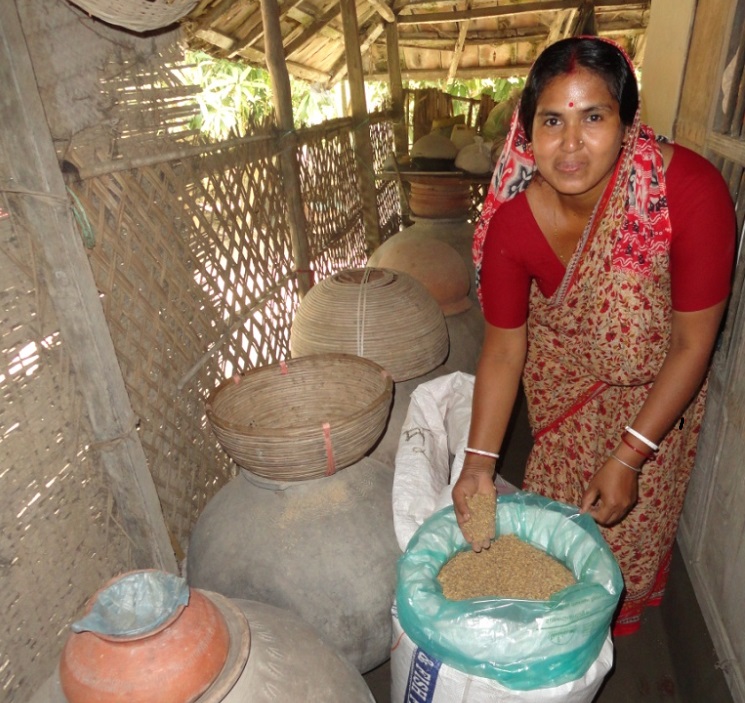Aroti Roy is a female farmer at the Auskhali Village in Batiaghata Upazila, Khulna District, Bangladesh. In her homestead, she is responsible for postharvest operations (drying, winnowing, selecting, and storing seeds), cattle- and poultry-rearing, daily household chores such as cooking and collecting water, and child care.
In 2011, Aroti attended a training activity by CSISA-Bangladesh on aman (wet season) rice production and improved postharvest management practices for rice, including seed storage. In the following aman season (2012), she applied and shared her new knowledge with her neighbors, and then later, with her husband.
Aroti advised her husband, Swapon Roy, on seedbed preparation, recommending that he establish a raised seedbed, which requires less seed than the conventional seedbed system. The traditional way of seedbed preparation also tends to damage some seedlings because of water pooling in depressed parts, thus weakening the seedling.
“Her advice and encouragement resulted in healthy rice seedlings. I was then able to transplant these in the same piece of land using only half the usual seed rate,” Swapon said of his wife. “She also reminds me of the importance of the right dosage and timing of applying chemical fertilizer and weed management.”
Swapon began to practice line transplanting of rice, which reduced the number of seedlings needed, and started to use integrated pest management. With Aroti’s new knowledge on producing good healthy seeds and improved seed storage, she decided to keep her own seeds this year and sold the extra seeds to her farmer-neighbors. The training she received enabled her family to become seed producers, which provides an extra and independent income.
She also uses IRRI Super Bags to store seeds and even painted the earthen pots for seed storage. Aroti and Swapon grew BRRI dhan53, a new salt-tolerant rice variety, making it possible for them to grow boro (dry season) seedlings early. She also cultivates Napier grass on the dike of her gher to feed the cattle, which means she no longer has to collect as much rice straw as before.








